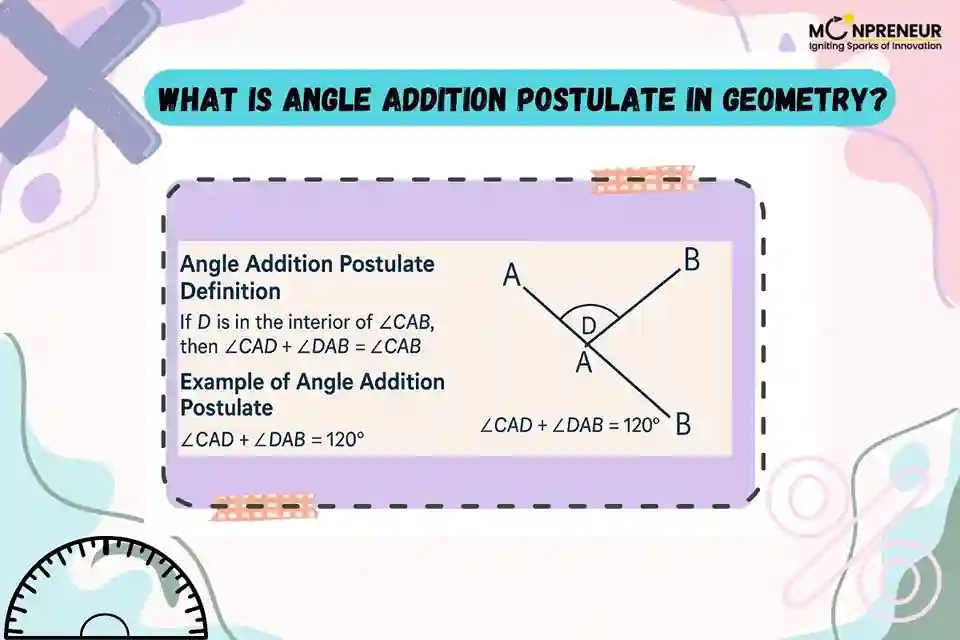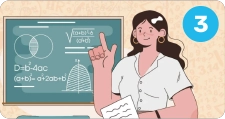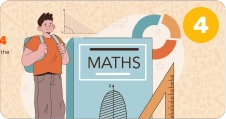Introduction: Understanding the Basics of Angles

Angles are a fundamental part of geometry, helping us measure and understand the space between two intersecting lines or rays. One key concept in angle measurement is the Angle Addition Postulate. This postulate is a simple yet powerful rule that helps solve geometry problems involving angle measurements.
Definition: What is the Angle Addition Postulate?
The Angle Addition Postulate states:
If a point lies inside an angle, then the measure of the larger angle is the sum of the measures of the two smaller angles formed.
In simpler terms, if you split one big angle into two smaller angles, adding their measures will give you the measure of the whole angle.
Formula:
If point D lies in the interior of ∠ABC, then:
m∠ABC = m∠ABD + m∠DBC
Example of the Angle Addition Postulate
Example 1:
If m∠ABD = 40° and m∠DBC = 50°, then:
m∠ABC = 40° + 50° = 90°
Example 2:
If m∠ABC = 120° and m∠ABD = 70°, then:
m∠DBC = 120° − 70° = 50°
Why is the Angle Addition Postulate Important in Geometry?
The angle addition postulate is widely used in geometry for:
- Solving unknown angle measures
- Understanding geometric proofs
- Working with parallel lines and transversals
- Building a strong foundation for trigonometry
It’s especially helpful when dealing with shapes, polygons, and complex diagrams.
Real-Life Applications
This concept isn’t just for the classroom—it appears in real life too:
- Architecture: Measuring angles for building design
- Engineering: Ensuring accurate structure alignment
- Art and Design: Creating precise patterns and shapes
Common Mistakes Students Make
- Forgetting to check if the point lies inside the angle before applying the postulate
- Confusing angle addition with angle subtraction
- Mixing up which angles add up to the larger angle
Conclusion: A Small Rule with Big Impact
The Angle Addition Postulate is a straightforward geometry principle that makes solving angle problems much easier. By remembering that the measure of a whole angle equals the sum of its parts, students can tackle more complex problems with confidence.
Want to spark your child’s interest in math and boost their skills? Moonpreneur’s online math curriculum stands out because it engages kids with hands-on lessons, helps them apply math in real-life situations, and makes learning math exciting!
You can opt for our Advanced Math or Vedic Math+Mental Math courses. Our Math Quiz for grades 3rd, 4th, 5th, and 6th helps in further exciting and engaging in mathematics with hands-on lessons.
Related Blogs:
How to Teach Adjacent Angles to Kids | Simple & Fun Guide
What are Congruent Angles?
Understanding Alternate Interior Angles
What is the Area of Trapezoid?
What is the Area of Parallelogram?
Understanding the Geometry Regents: A Comprehensive Guide
How to Prepare for the Geometry Regents: Study Plans & Practice
The Art of Geometry: How to Draw an Equilateral Triangle Inside a Circle













